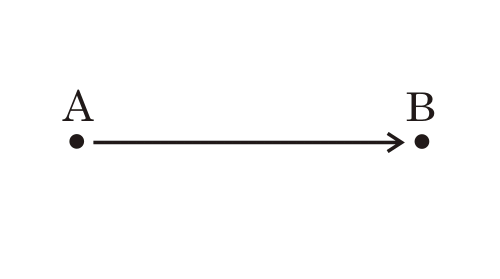|
LITR 4632: Literature of the Future  |
Student Midterms 2013 Sample Student Submission
|
 |
Rachel Jungklaus
Alternapocalypse or Altevolution
The writing on the wall was hard for me to miss this
semester. One thing that every text has had this semester is a warning of the
future. Every one of the three standard narratives humans tell about the future
has a hidden meaning, almost. Like the author wanted to tell the reader to learn
from the mistakes of the characters so you do not have to make those mistakes in
real life. So with that idea in mind, contemplate this: every evolutionary or
apocalyptic tale is an alternative future.
Revelation, the tale of
the apocalypse as God showed him, was such an obvious warning that it needs
little assistance or creativity to see it. The biggest clue-in was “He
that hath an ear, let him hear what the Spirit saith unto the churches,” which
was repeated three times in chapter 2 and three more times in chapter 3. Later,
it was the writing style that was a warning, “One woe is past; and, behold,
there come two woes more hereafter,” which is more of an “I am not done yet”
idea that repeats in several of the chapters. Then there were the warnings in
imagery, like “And I looked, and behold a
pale horse: and his name that sat on him was Death,
and Hell followed with him. And power was given unto them over the fourth part
of the earth, to kill with sword, and with hunger, and with death, and with the
beasts of the earth”(6:8) and later “And in those days shall men seek
death, and shall not find it; and shall desire to die, and death shall flee from
them” (9:6). This is a potential future presented to the reader as if you do not
believe, then you will suffer all of this.
Parable of the Sower is
an apocalyptic, as well as evolutionary, tale. People damaged the environment so
badly, that water and food are scarce, and because they are scarce so are jobs
and money. Lauren, the main character, wonders to herself “how many years it
will be before we see the rain again”(p.60). People have evolved to make the
best of what they have, building walls around their communities, working,
stealing or killing for what they need. Children are raised being told what life
was like and that it will get back that way, but the people are harder now. They
have to be to survive; they have had to adapt. Lauren, the main character, tells
the reader through her journal about the end of her community, how it went up in
flames when the paints attacked. The imagery here is very apocalyptic, and when
the “end” happens they pick up the pieces and move on. The warning in this
possible future is that we have been damaging the environment for years and the
time will come when the resources run out, so we need to make a change.
The
Time Machine is more of an
evolutionary tale than an apocalyptic one. The Time Traveller climbs into the
saddle of his time machine and goes to 802,701 A.D. where he discovers the two
evolutionary paths taken by future humans.
The Traveller initially concludes
that, “in
the end, above
ground you must have the Haves, pursuing pleasure and comfort and beauty, and
below ground the Have-nots, the Workers getting continually adapted to the
conditions of their labor” (p.63). The warning here seems even clearer: the
economic gap must not be allowed to widen too far, for the consequences are the
decline of society.
Mozart in Mirrorshades is
an evolutionary and apocalyptic tale with its advanced technology and ending
with in fire and explosions and people running back to their own time. The way
the historical figures adapt and change when people from the future go back and
fiddle with it is endlessly horrifying to me. Mozart is one of my most admired
historical figures and in this alternative history he is a whinny teenager who
causes catastrophe because he wants his own way. The character Sutherland has it
right when she says “don’t you think we should let him be?” (p.225). The warning
in this tale is that just because we can do something does not mean we should.
This point is that we need to learn not only from our own
mistakes, but from others mistakes as well. Just because their mistakes are
fictional does not make them any less valid. All of these stories are
alternative futures for us. As William Bazemore concluded his 2007 midterm
Learning Lessons, “Once
society learns to appreciate hypotheticals, we can see a world in which more
concern can be given to our future.”
Easy Magic
What makes a text appropriate for use in the classroom? Easy
magic. Easy magic may be simple words, but the idea is complex. In Survey of
Exceptionalities, students read
Exceptional Lives by Turnbull and Turnbull. Chapter 12 opens with Richard
Ellenson speaking of communication, “You need to find the easy magic that will
open the door for people quickly. After that, people will do the work for
themselves. Once people have taken an interest, building a relationship is much
easier.” Easy magic is what makes reading fun. It is what builds into a
relationship with reading, books, and learning. Mr. Ellenson was talking about
how to make relationships with disabled students, but I believe the idea can be
applied to reading as communication, both between the author and reader and
between the teacher and students. So the question that should be asked is what
is the easy magic? The easy magic that makes books appropriate for the classroom
is connectivity. We have talked about this many times in class. The reader needs
to be able to relate to the story somehow. Wells Law says that
"… an sf or fantasy story should contain only a
single extraordinary assumption." The idea is that otherwise the reader could
not accept and therefore connect to the story. Future narratives build on what
you already know, starting with something simple you can connect with. It is
easy magic.
The Time Machine
has plenty of easy magic. The story being secondhand makes it easier to believe.
The reader can identify with having been told a story that they did not quite
believe themselves and then sharing that story with someone else. It sounds like
some of the gossip told at church on Sunday, except instead of church it was a
meeting of the minds. That is part of the magic. While the words used at the
beginning did not make a whole lot of sense to me, they did sound like science,
which was the point. Again, it makes it almost believable. Easy magic!
Parable of the Sower was
a brilliant story filled with easy magic. I could definitely see this book being
used in a high school classroom. It was about a young woman who did not believe
in her father’s God, which is something a lot of teenagers can relate to. The
environment has been damaged by people; global warming. When her neighborhood is
destroyed, Lauren strikes out with the only other survivors she could find. This
is where I want to be her. Readers feel so connected to Lauren that they need to
know what comes next. Parable is so
easy to connect with that it makes it hard to put the book down. That is my
favorite kind of easy magic; a world that I could live in where students could
join me for a time.
Stone Lives was another
lovely mix of easy magic and future society that draws in readers. It is a story
that while it has a lot of new technology that was hard to grasp, it also had
Stone who was very real and flawed. Stone was a character that I wanted to get
to know. He was strong and brave and damaged and so relatable. Discovering
history and the world with him was wonderful. Flying around the world to see
things that do not exist in our time was as exhilarating for me as it was for
him. Asking those questions that we ourselves ask made him human.
Bears Discover Fire is a
sweet humorous story. The easy magic in
Bears is the humor of it. Nothing was very different from our own world,
except that bears had discovered the use of fire and were no longer hibernating.
Even the news media in this story were very matter-of-fact about bears
discovering fire.
All of these stories have easy magic. Whether it is humor,
humanity, or hope, they all have the little extra that would make them perfect
for using in a classroom. Readers evaluate, compare, and relate to the
characters in stories. When more than one person connects to a story, then
discussion happens. That makes them even better for using in a classroom.
Imagine how dull it would be if we did not discuss the stories we read.
 |
 |
 |